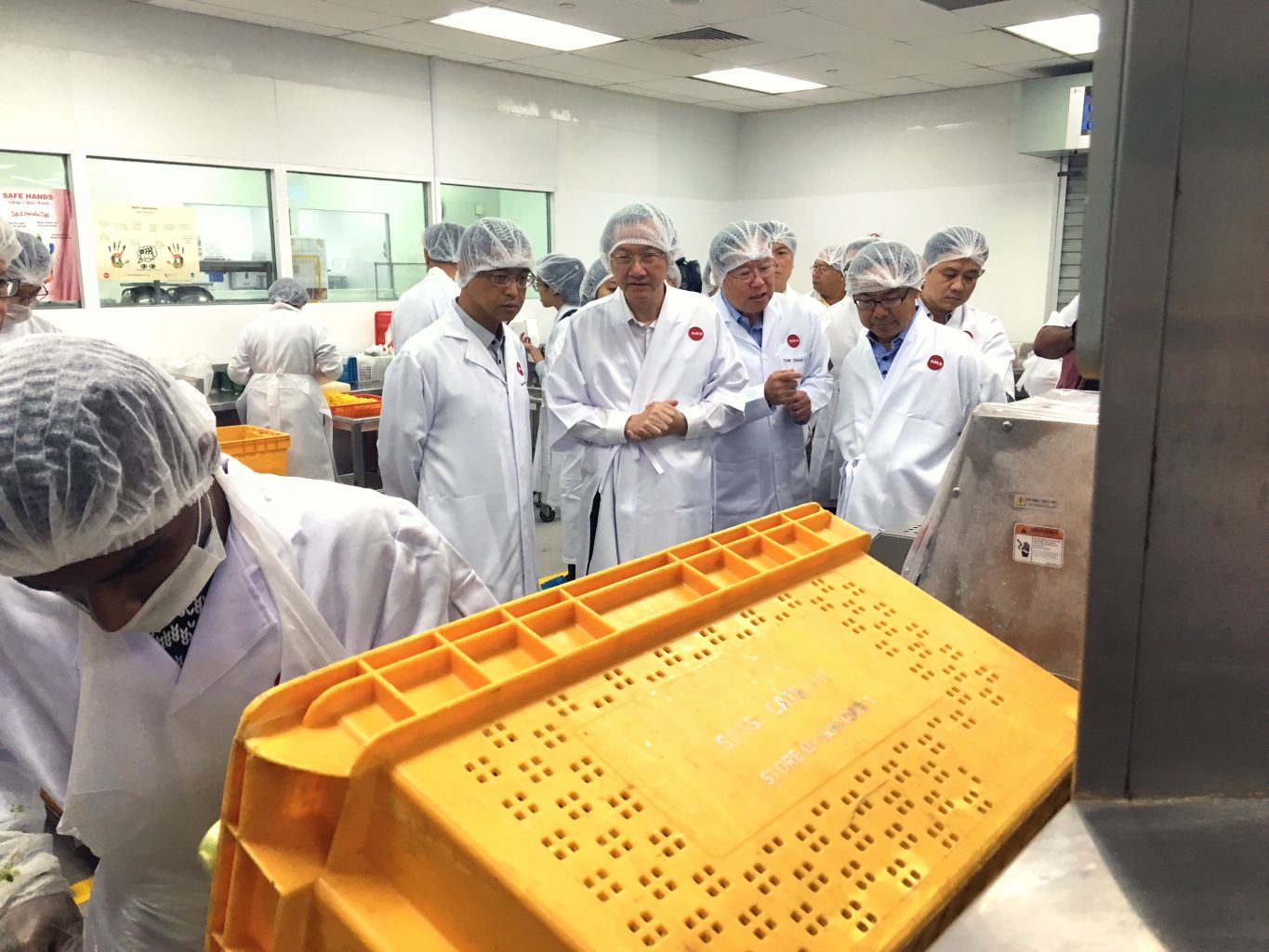'Safe Hands' campaign to reduce workplace hand and finger injuries
Sign up now: Get ST's newsletters delivered to your inbox

(From left) SATS Inflight Catering Senior vice-president Goh Siang Han, Minister of State for Manpower Sam Tan, SATS Chairman of Food Solutions Tan Chuan Lye and Singapore National Employers Federation vice-president John Ng on a tour of the SATS Inflight Catering Centre 1 on Jan 17, 2017.
PHOTO: WORKPLACE SAFETY AND HEALTH COUNCIL
Yasmine Yahya
Follow topic:
SINGAPORE - The Workplace Safety and Health Council launched a "Safe Hands" campaign on Wednesday (Jan 17) to raise awareness about hand and finger injuries that could result in amputations.
This third and final phase of national workplace safety and health campaign follows two earlier phases, focused on falls and vehicle accidents.
In a speech at the launch of the campaign, Minister of State for Manpower, Mr Sam Tan, noted that since 2012, there has been a steady volume of amputation injuries, averaging around 10 to 12 cases a month.
Last year, there were 125 amputation cases, of which 117, or 94 per cent, were hand-related.
"From handling such amputation cases, we know that the injuries affect the livelihoods of workers whose jobs rely on operating machinery or handling materials," Mr Tan said at the event at the SATS Inflight Catering Centre.
"From our investigation we discovered that more than half, 55 per cent, of amputation injuries were due to inadequate safety provisions at the workplace, such as the lack of proper machine guarding and risk management."
Mr Tan noted that the campaign also comes after a Manpower Ministry enforcement operation between September and November last year, targeting machinery safety and other amputation hazards.
MOM officials visited over 400 workplaces in the manufacturing and construction sectors and took more than 1,000 enforcement actions, he said. Machinery-related issues were most common, numbering about 200.
Other causes include poor machine maintenance, unauthorised operation of machinery and inadequate training for workers who operate the machines, he added.
To address these causes, Mr Tan said managers must walk the ground so they can recognise, identify, manage and control amputation hazards caused by mechanical components of machines, safety risks that workers are exposed to when the machines are in operation, or unsafe activities that workers perform.
"Once management shows its attention, support and commitment to safety, every employee will take notice," Mr Tan said.
"They will then pay the same attention and comply with the necessary safety practices required at the workplace where machines are used."
Mr Tan also urged companies to make use of the Ministry of Manpower's Job Redesign Grant, which provides up to $300,000 in funding to help companies use technology to improve safety standards and enhance production efficiency.

